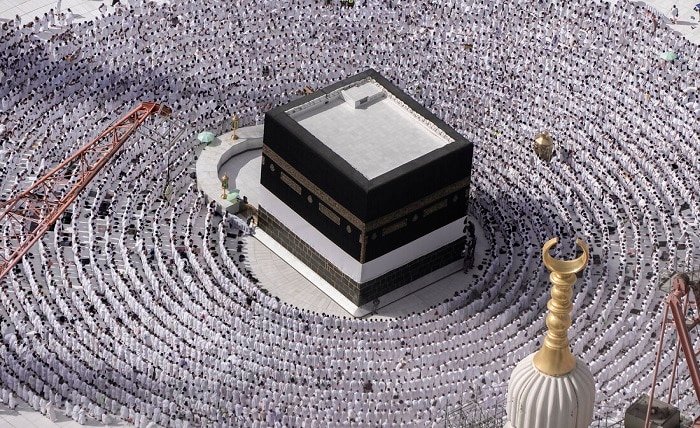
Introduction to Mecca
Mecca, known as Makkah in Arabic, is not only the holiest city in Islam but also one of the most spiritually significant places in the world. Located in the Hejazi region of Saudi Arabia, Mecca is revered as the birthplace of the Prophet Muhammad and the site of the Kaaba, Islam’s most sacred structure. Each year, millions of Muslims from across the globe undertake a spiritual journey to Mecca to perform Hajj, fulfilling one of the Five Pillars of Islam. In this blog, we explore the profound historical, religious, and cultural significance of Mecca, tracing its roots and examining its modern-day importance.
Historical Significance of Mecca
The history of Mecca dates back thousands of years, long before the advent of Islam. It was an important trade hub due to its strategic location along the ancient caravan routes. However, the most significant moment in Mecca’s history was the birth of Prophet Muhammad in 570 CE. His teachings and the revelation of the Quran, which Muslims believe to be the word of God, transformed Mecca into the spiritual epicenter of Islam. The city’s history is deeply intertwined with the emergence of Islam, and Mecca remains a living symbol of the faith’s origins.
The Kaaba: The Heart of Mecca
At the center of Mecca lies the Kaaba, a cuboid structure located inside the Masjid al-Haram (The Sacred Mosque). The Kaaba is considered the “House of God” and holds immense religious significance. Muslims around the world face the direction of the Kaaba, known as the Qibla, during their daily prayers. According to Islamic tradition, the Kaaba was originally built by Prophet Abraham and his son Ishmael as a sanctuary dedicated to monotheism. Visiting the Kaaba is a pivotal aspect of the pilgrimage to Mecca, and touching or kissing the Black Stone embedded in one corner is considered a highly spiritual act.
The Hajj: A Pilgrimage of Faith
Every year, millions of Muslims undertake the Hajj pilgrimage to Mecca, one of the largest religious gatherings in the world. Hajj is one of the Five Pillars of Islam, a religious obligation that every Muslim must fulfill at least once in their lifetime if they are physically and financially able. The pilgrimage occurs during the Islamic month of Dhu al-Hijjah, and the rites performed during Hajj commemorate the trials of Prophet Abraham and his family. The Hajj rituals include circumambulating the Kaaba, walking between the hills of Safa and Marwah, and standing on the plain of Arafat in deep prayer. For Muslims, the journey to Mecca is a profound spiritual experience.
Umrah: The Lesser Pilgrimage
While Hajj is a once-in-a-lifetime obligation, Muslims can also perform Umrah, a pilgrimage to Mecca that can be undertaken at any time of the year. Known as the “lesser pilgrimage,” Umrah involves many of the same rituals as Hajj, including circumambulating the Kaaba and walking between Safa and Marwah. However, Umrah is considered a non-mandatory, but highly recommended, act of worship. For those who cannot undertake Hajj, Umrah offers an opportunity to connect with the sacredness of Mecca and renew their faith.
Sacred Sites in Mecca
Beyond the Kaaba, Mecca is home to several other sacred sites that hold deep religious significance. One such site is the Well of Zamzam, believed to be a miraculous source of water that sprang up in the desert when Hagar, the wife of Prophet Abraham, searched desperately for water for her son Ishmael. The water from Zamzam is considered blessed, and pilgrims often drink from it during their visit. Another important location is Mount Arafat, where Prophet Muhammad delivered his Farewell Sermon. Pilgrims spend a day in intense prayer and reflection on Arafat, marking one of the most important rites of Hajj.
The Role of Mecca in Islamic Worship
Mecca plays a central role in the daily lives of Muslims, far beyond its significance during Hajj and Umrah. The city is the direction (Qibla) that Muslims face during their five daily prayers, underscoring its global religious importance. Additionally, the Quran mentions Mecca numerous times, highlighting its status as the holiest place on earth. The connection between Muslims and Mecca is deeply personal, as it serves as a symbol of unity and submission to God’s will, transcending geographical boundaries.
Modern-Day Mecca: Balancing Tradition and Progress
While Mecca is steeped in religious tradition, it has also undergone significant modernization to accommodate the millions of pilgrims who visit each year. The expansion of the Masjid al-Haram and the construction of towering hotels and infrastructure have transformed Mecca into a bustling metropolis. These developments aim to improve the experience for pilgrims, ensuring their safety and comfort during Hajj and Umrah. However, the city continues to balance modernization with preserving its sacred heritage, ensuring that the spiritual essence of Mecca remains intact.
Cultural and Economic Impact of Mecca
The annual influx of pilgrims to Mecca has a profound economic and cultural impact on Saudi Arabia. Hajj and Umrah generate significant revenue through tourism, hospitality, and other related industries. Additionally, Mecca serves as a hub of Islamic learning and scholarship, attracting religious scholars and students from around the world. The city’s cultural and economic influence extends far beyond its borders, as it plays a crucial role in the global Muslim community.
Mecca and Interfaith Relations
While Mecca is exclusively reserved for Muslims, its significance in world history and religion invites dialogue and understanding across faiths. The values of peace, charity, and unity emphasized in Mecca resonate with universal religious principles. Interfaith dialogue surrounding Mecca often focuses on promoting tolerance, respect, and a deeper understanding of Islamic practices and beliefs. This broader engagement fosters global connections and enhances mutual respect between different faith communities.
Conclusion
Mecca stands as the spiritual heart of Islam, a city that represents devotion, unity, and submission to the will of God. From the ancient days of Prophet Abraham to the modern era, Mecca continues to inspire and guide millions of Muslims worldwide. Whether through the pilgrimage of Hajj or the lesser journey of Umrah, visiting Mecca is a transformative experience that deepens one’s faith and connection to the divine. As a place of immense historical, cultural, and religious significance, Mecca remains a timeless symbol of Islam’s enduring values and the unity of the global Muslim community.
Frequently Asked Questions (FAQs)
1. Why is Mecca considered the holiest city in Islam?
Mecca is considered the holiest city in Islam because it is the birthplace of Prophet Muhammad and the location of the Kaaba, the most sacred structure in Islam. Muslims around the world face Mecca during their prayers, and it is the destination for the Hajj pilgrimage, one of the Five Pillars of Islam.
2. Can non-Muslims visit Mecca?
No, non-Muslims are not permitted to enter Mecca. The city is reserved for Muslims due to its religious significance, and only those who adhere to the Islamic faith are allowed to participate in the rituals associated with the Kaaba and the Hajj pilgrimage.
3. What is the difference between Hajj and Umrah?
Hajj is the mandatory pilgrimage that Muslims must perform at least once in their lifetime if they are physically and financially able. It takes place during a specific time of the year, in the Islamic month of Dhu al-Hijjah. Umrah, on the other hand, is a non-mandatory pilgrimage that can be performed at any time of the year. While both involve visiting Mecca and performing similar rites, Hajj includes additional rituals and is a far larger event.
4. What are the main rituals of the Hajj pilgrimage?
The main rituals of Hajj include Ihram (a state of spiritual purity), Tawaf (circumambulating the Kaaba), Sa’i (walking between the hills of Safa and Marwah), standing at Arafat in prayer, and stoning the pillars representing the devil in Mina. These rituals commemorate the trials of Prophet Abraham and his family and are central to the spiritual experience of Hajj.
5. How has modern infrastructure changed Mecca?
Modern infrastructure has significantly transformed Mecca, particularly with the expansion of the Masjid al-Haram to accommodate millions of pilgrims. The construction of hotels, transport systems, and other facilities has made the city more accessible and comfortable for visitors, though there is ongoing debate about preserving the city’s historical and cultural heritage amidst this development.





